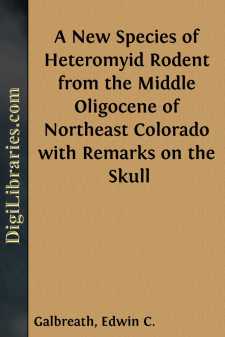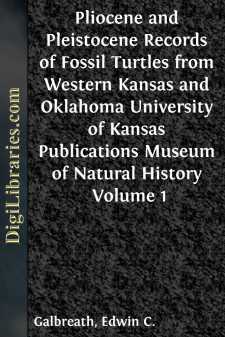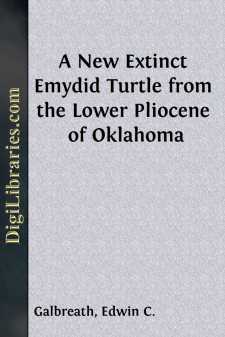Categories
- Antiques & Collectibles 13
- Architecture 36
- Art 48
- Bibles 22
- Biography & Autobiography 813
- Body, Mind & Spirit 142
- Business & Economics 28
- Children's Books 15
- Children's Fiction 12
- Computers 4
- Cooking 94
- Crafts & Hobbies 4
- Drama 346
- Education 46
- Family & Relationships 57
- Fiction 11828
- Games 19
- Gardening 17
- Health & Fitness 34
- History 1377
- House & Home 1
- Humor 147
- Juvenile Fiction 1873
- Juvenile Nonfiction 202
- Language Arts & Disciplines 88
- Law 16
- Literary Collections 686
- Literary Criticism 179
- Mathematics 13
- Medical 41
- Music 40
- Nature 179
- Non-Classifiable 1768
- Performing Arts 7
- Periodicals 1453
- Philosophy 64
- Photography 2
- Poetry 896
- Political Science 203
- Psychology 42
- Reference 154
- Religion 513
- Science 126
- Self-Help 84
- Social Science 81
- Sports & Recreation 34
- Study Aids 3
- Technology & Engineering 59
- Transportation 23
- Travel 463
- True Crime 29
A New Species of Heteromyid Rodent from the Middle Oligocene of Northeast Colorado with Remarks on the Skull
Description:
Excerpt
Heretofore our knowledge of the osteology of Heliscomys Cope has been extremely limited; this genus previously was known by its teeth, fragmental maxillaries, incomplete palatine bone and mandible, and part of one forelimb. In the summer of 1946 the writer, as a member of the University of Kansas Museum of Natural History field party, discovered the anterior part of a skull of Heliscomys in the middle Oligocene deposits of Logan County, Colorado. This specimen, representing a new species, yields a welcome, and greatly desired addition to our fund of information about the genus.
The writer is indebted to Dr. Robert W. Wilson for advice and helpful criticism in the course of this study, and to Mr. Bryan Patterson of the Chicago Natural History Museum for the loan of comparative material. Mrs. Bernita Mansfield of the Geology Department, University of Kansas, prepared the plates.
Family HETEROMYIDAE
Heliscomys tenuiceps, new species
Holotype.âAnterior part of a skull with left P4-M3, No. 7702, Vertebrate Paleontological Collection, Museum of Natural History, University of Kansas.
Geological Age and locality.âSilts of Orellan age in the Cedar Creek facies of the Brule formation in "Chimney Canyon," Sec. 3, T. 11 N, R. 54 W, Logan County, Colorado.
Diagnosis.âSize larger than any known species; P4 with posteroexternal cusp (metacone) anterior to central (hypocone) and lingual (entostyle) cusps, which are connected by a cingulum; internal cingula of molars undivided, and as high as paracone and metacone; style of each cingulum opposite the straight median valley; rostrum deep and laterally compressed.
Description.âThe type consists of the preorbital and interorbital parts of a skull. Its size is comparable to that of the Recent heteromyid, Liomys pictus Merriam. L. pictus is the species referred to in the comparisons below when only the generic name Liomys is mentioned. Both incisors have been broken off. The right tooth-row is missing, but the left row is complete, and its orientation indicates that the tooth rows were parallel. The zygomata are broken off close to the rostrum, which is relatively narrow in comparison with its length and depth. In this narrowness, the specimen resembles Florentiamys Wood more than it does such Recent heteromyids as Liomys or Heteromys, where the rostrum is much wider at the dorsal surface than at the ventral surface (correlating with the wide interorbital dimension). In No. 7702 the rostrum is not appreciably expanded on the dorsal surface. The wide interorbital dimension also gives a tapering appearance to the rostrum of the Recent heteromyids, when viewed dorsally, which is not seen in the fossil specimen. Like those of most heteromyids, the nasals and premaxillaries project forward beyond the incisors.
H. tenuiceps has a distinctly heteromyidlike appearance, and it is obvious that the features of the anterior part of the skull, which characterize the heteromyids, had been established by middle Oligocene time.
The nasal bone extends caudad as far as does the premaxillary; they terminate at the anterior border of the orbit. The nasal is widest anteriorly where it curves downward on the side to meet the anterior projection of the premaxillary bone beyond the incisor. Posteriorly, the two nasals have practically parallel lateral borders much as in Liomys.
The frontal bone dorsally is relatively narrower than in any Recent heteromyid, and closely resembles that of the geomyids. There is a slight depression in the midline of the skull where the two frontals unite, but no evidence of a ridge for the attachment of the temporal muscle....




